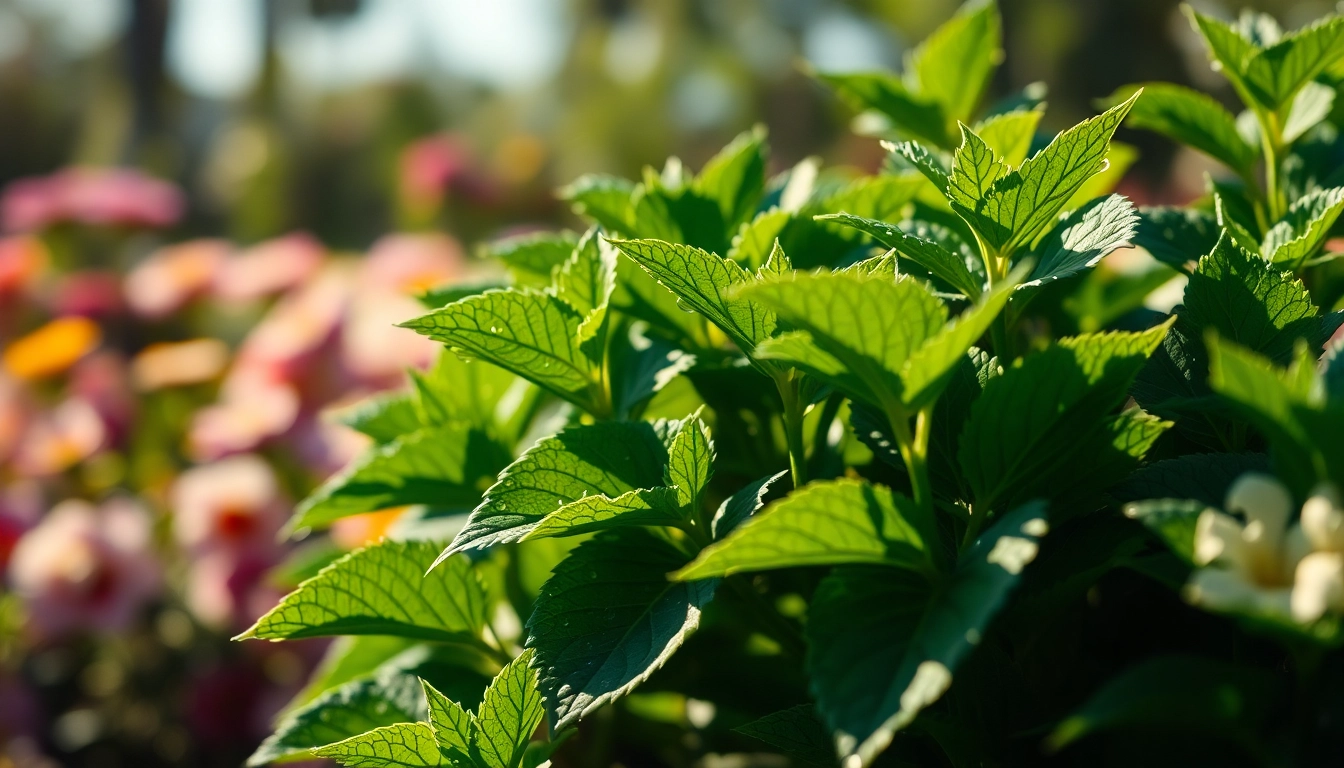Discovering Patchouli: The Earthy Elegance and Essential Uses

Patchouli, a fragrant herb with a rich history and a deep, earthy aroma, has captivated the senses of cultures around the world for centuries. Known for its unique scent, this versatile plant, scientifically classified as Pogostemon cablin, has found its way into multiple industries, including perfumery, aromatherapy, and alternative medicine. If you’re interested in exploring the myriad uses and meanings of patchouli, you’ve come to the right place. This article delves into its origins, characteristics, uses, and how to incorporate patchouli into your daily life. For a complete experience, considering discussing patchouli with experts through resources such as patchouli producers and enthusiasts.
Understanding Patchouli: Origins and Characteristics
The Patchouli Plant: Botany and Habitat
Patchouli is a member of the Lamiaceae family, commonly referred to as the mint or deadnettle family. This unique plant thrives in tropical climates, particularly in Southeast Asia, where it is cultivated primarily for its aromatic leaves. The plant grows as a bushy perennial herb, reaching heights of up to 75 centimeters, and is marked by erect stems that bear small, pale lilac flowers. Patchouli thrives in a well-drained, moisture-retentive soil, requiring a warm and humid environment to flourish.
Historical Significance of Patchouli in Cultures
The history of patchouli is as rich as its scent. This plant has been used for centuries in Eastern cultures for medicinal and cosmetic purposes. Its leaves were traditionally used in Hindu rituals and are known for their capacity to mask the scent of mothballs in textiles, leading to their prominence in trade along the Silk Road. In the 19th century, patchouli became popular in Western perfumery, often associated with the “hippie” culture of the 1960s. Today, it continues to play a significant role in various cultural practices around the globe.
Characteristics of Patchouli Aroma and Properties
Patchouli is known for its heavy, strong, woody, and earthy scent. It possesses sweet, spicy notes that can be likened to damp soil, cedar, and musk. When blended with other aromas, patchouli can enhance depth and complexity, making it a coveted ingredient in many perfumes. Additionally, its olfactory profile is thought to influence emotions, with studies suggesting that the scent may induce feelings of balance and tranquility.
Uses of Patchouli in Perfume and Aromatherapy
How Patchouli is Used in Fragrances
Patchouli has become a staple in the world of perfumery. Its unique scent profile allows it to be combined effectively with floral, spicy, and sweet notes, making it a versatile base note in many fragrances. Historically, patchouli oil has been added to perfumes to provide longevity and depth, enhancing the overall scent experience. Brands have leveraged this quality by incorporating patchouli into popular fragrances, reflecting both tradition and modernity.
Benefits of Patchouli in Aromatherapy
Aromatherapy enthusiasts often praise patchouli for its therapeutic properties. The oil derived from patchouli leaves is believed to promote emotional well-being, reduce anxiety, and even alleviate signs of depression. Its antimicrobial and anti-inflammatory properties make it an effective natural remedy for skin ailments when diluted appropriately. Many practitioners utilize patchouli oil in diffusers, massage oils, or topical applications to enhance mood and create a calming atmosphere.
Common Products Containing Patchouli
Patchouli can be found in a variety of products, including perfumes, essential oils, incense, and organic cosmetics. Due to its insect-repelling properties, it is often incorporated into natural insecticides and repellents, offering an eco-friendly alternative to synthetic options. Furthermore, the scent is popular in home fragrance products, including candles and air fresheners, providing ambiance and a soothing environment.
Patchouli Oil: Extraction and Applications
Methods of Extracting Patchouli Oil
The extraction of patchouli oil is a delicate process that typically involves steam distillation. Freshly harvested leaves are subjected to steam, which releases the essential oils. This method preserves the integrity of the oil’s compounds and ensures the retention of its distinctive fragrance. Some producers may also employ various hydro-distillation methods; however, steam distillation remains the most widely recognized technique.
Holistic and Therapeutic Uses of Patchouli Oil
In holistic practices, patchouli oil is revered for its therapeutic potential. People often use it in aromatherapy for stress relief, as it is known to help promote emotional balance and relaxation. Its antifungal and antiseptic properties make it beneficial in skincare regimens, particularly for treating acne and skin irritations. Moreover, it is increasingly used in combination with other essential oils to amplify its beneficial effects, creating synergistic blends that cater to diverse holistic needs.
Safety and Precautions for Using Patchouli Oil
While patchouli oil is generally safe for most people when used correctly, it is essential to take precautions to avoid irritation. Dilution is paramount; it should not be applied directly to the skin without a carrier oil. Pregnant or nursing women and individuals with allergic reactions to mint family plants should consult healthcare professionals before using patchouli oil. Conducting a patch test on a small area of skin can help to assess individual reactions before broader applications.
The Cultural Significance of Patchouli Through the Decades
Patchouli in the 1960s: The Hippie Movement
Patchouli gained significant fame during the 1960s as it became intertwined with the hippie movement. Its strong, earthy scent was often associated with free-spirited individuals seeking to represent their rebellion against conventional norms. The fragrance became a symbol of peace, love, and a return to nature. During this period, patchouli oil was not only used for its scent but also for its supposed grounding and balancing effects on the mind and body.
Modern Resurgence of Patchouli in Fashion and Lifestyle
Recently, patchouli has experienced a resurgence in popularity, evolving from its hippie roots to a sophisticated element in modern fashion and lifestyle. Designers incorporate patchouli into high-end fragrances, showcasing its depth and versatility. Contemporary consumers are also gravitating toward patchouli-infused lifestyle products, drawn to its organic origins and symbol of ecological awareness. The new generation of fragrance aficionados seeks to reinvigorate and recontextualize patchouli, intertwining legacy with innovation.
The Evolution of Attitudes Towards Patchouli
Attitudes toward patchouli have shifted dramatically over the years. Once viewed primarily as the scent of the counterculture and associated with negative stereotypes, it is now enjoying appreciation by diverse audiences. Modern consumers appreciate patchouli’s multifaceted profile and its capacity to evoke powerful memories and emotions. This evolution reflects broader shifts in fragrance trends, moving towards more natural, earthy scents that promote well-being and connect individuals to the environment.
Incorporating Patchouli into Daily Life
DIY Recipes Featuring Patchouli Oil
There is a variety of ways to incorporate patchouli oil into daily routines through DIY recipes. A simple patchouli body scrub can be made by mixing brown sugar, coconut oil, and a few drops of patchouli oil to create an exfoliating blend. For a calming bath experience, add several drops of patchouli oil into a warm bath infused with Epsom salts and your choice of additional essential oils such as lavender or ylang-ylang for a holistic experience that relaxes the mind and body.
Combining Patchouli with Other Scents
Patchouli’s earthy profile pairs beautifully with many other scents, allowing fragrance enthusiasts to experiment with custom blends. Combining patchouli with floral oils like jasmine or rose creates a balance of warmth and freshness, while mixing it with citrus notes like bergamot or lemon can infuse an uplifting vibe. Additionally, pairing patchouli with spicy scents like clove or cinnamon can yield an intriguing and complex aroma, suitable for a cozy ambiance.
Creating a Relaxing Atmosphere with Patchouli
To create a calming environment at home, consider using patchouli in various forms, such as candles, incense, or a diffuser with patchouli essential oil. This can transform the atmosphere, promoting relaxation and mindfulness. Utilizing patchouli alongside other grounding scents helps alleviate stress and enhances meditation practices, providing a serene backdrop for unwinding after a long day.






